Research Paper Award
EXAMPLE OF COMPOSITE DETERIORATION OF RC SLAB CAUSED BY ASR AND FROST ATTACK IN MOUNTAINOUS COLD AREA AND ITS VERIFICATION TEST



Koichi KOBAYASHI (Gifu University), Yutaka KANO (Komaki City) and Keitetsu ROKUGO (Gifu University)
Japan is proud of its widely varying climate. This climate means, however, that concrete structures in the country are exposed to a wide variety of degradation actions, resulting in a great number of deterioration mechanisms. Recently, unusual deteriorations that may be triggered by an increased use of de-icing salt have been observed in cold mountainous areas.
The first step in this study of the phenomenon was to examine the deterioration of an RC deck from a steel girder bridge constructed in a cold mountainous region at an altitude of 1,000m. A large pothole was found on the deck and the surface concrete was ground into muddy remains. On the under surface of the deck, mesh-pattern cracks with white deposits had formed (Photo 1). On overhanging sections of the deck, wheel guards and an abutment, surface
scaling was observed (Photo 2). Photo 3 shows part of the cross section of the bridge deck removed from the girder.
Across the entire section, many horizontal cracks are seen that penetrate
the coarse aggregate. The Young’s modulus of concrete cores taken from
the deck was as low as 9.7GPa, which accords with the typical characteristics
of ASR-deteriorated concrete. In addition, it is known that ASR in bridge
decks results in horizontal cracks, as there is no vertical confinement.
Therefore, the cause of the severe damage observed in the case of this
bridge can be assumed to be composite deterioration under ASR and frost
attack.
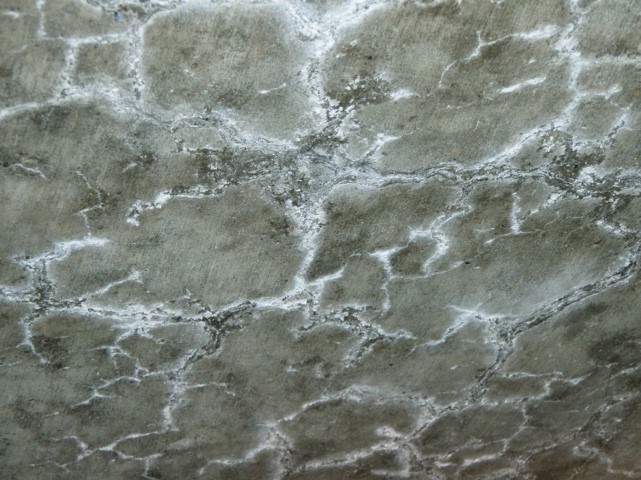 |
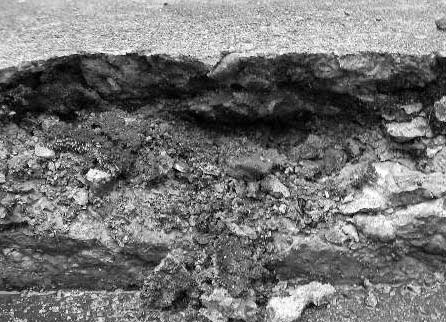 |
Photo 1 Mesh-pattern cracks and white deposits
on under surface of bridge deck |
Photo 2 Severe scaling of wheel guard concrete |
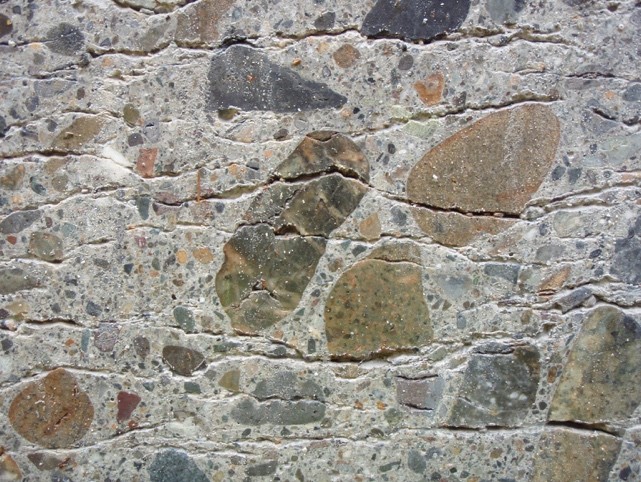
Photo 3 Horizontal cracks in the cross section of the bridge deck
Based on the above observations, the combined effects of ASR and frost
attack on surface scaling and concrete expansion were studied. Concrete
specimens containing reactive aggregates were allowed to deteriorate in
a high-temperature, high-humidity chamber, and then were subjected to rapid
freeze-thaw cycles (Fig. 1). The effects of reactive aggregate, degree of ASR degradation, type of
alkali used to accelerate ASR, concrete air content, and rebar arrangement
on expansion, relative dynamic modulus of elasticity, and weight loss were
examined.
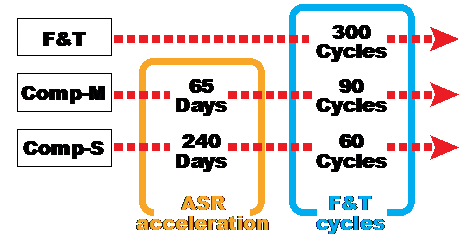 |
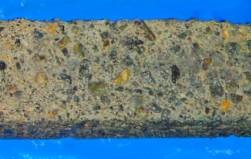 |
Fig. 1 Three types of deterioration process
on under surface of bridge deck |
Photo 4 An example of severe surface scaling
on a Comp-S beam after 60 cycles of freezing
and thawing |
Specimens that have suffered deterioration by ASR and are then exposed
to freeze-thaw cycles suffer not only severe surface scaling (Photo 4)
but also further expansion, even under the low temperatures of freeze-thaw
cycles (Fig. 2). Such severe frost damage in ASR-deteriorated concrete cannot be mitigated
by entrained air. The micro-pores in concrete become smaller as ASR deterioration
progresses, resulting in a decreased volume of pores with a diameter between
100 and 1,000nm. While pores of this size are known to impair durability
against frost attack, reducing their volume did not lead to high durability
against frost attack here. This change in pore size is not caused by cement
hydration, which causes a tight and strong matrix, but by the production
of ASR gel that fills the coarse capillary pores.
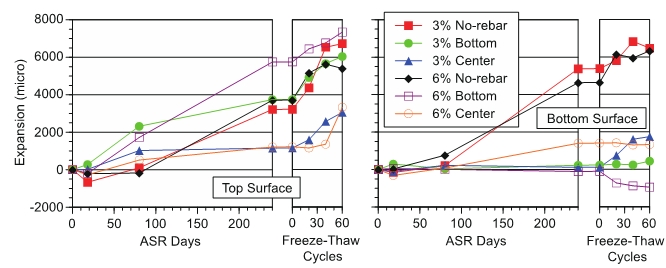
Fig. 2 Expansion of Comp-S beams with NaCl
To accelerate ASR in the above test, NaCl was used. Since chloride might also promote scaling, NaNO2 was used as an alternative stimulus for ASR in the next stage. Concrete to which both NaCl and NaNO2 were added suffered severe scaling during freeze-thaw cycles. Therefore,
it can be concluded that the primary cause of scaling is the complex interaction
of ASR and frost attack. Even when only the coarse aggregate is reactive,
the pore size distribution of mortar is similar to that containing both
fine and coarse reactive aggregate, resulting in severe deterioration by
a complex interaction between ASR and frost attack.
PDF Version








